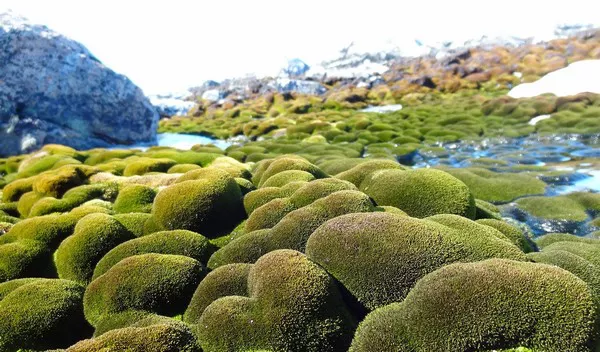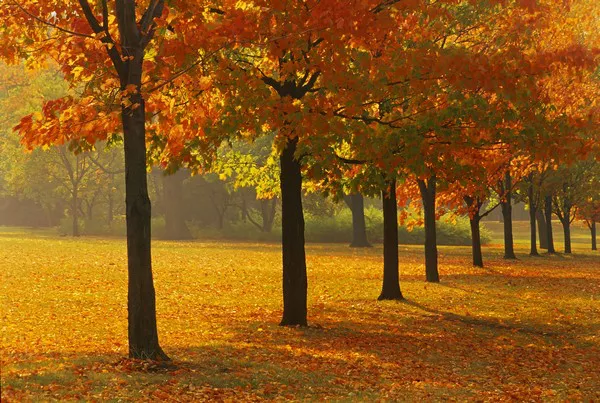Nature has a remarkable ability to adapt to diverse climates, and some plants have evolved to thrive in the harshest of cold environments. These cold-resistant plants not only survive freezing temperatures but often showcase unique adaptations that enable them to flourish in icy landscapes. In this exploration, we delve into the world of cold-resistant plants, uncovering the strategies they employ to withstand extreme cold and celebrating their resilience. Join us on this botanical journey as we unveil the ten most cold-resistant plants that have mastered the art of survival in frigid climates.
10 Most Cold-Resistant Plants
1. Arctic Moss (Ceratodon purpureus)
In the extreme conditions of the Arctic tundra, where temperatures can plummet well below freezing, Arctic Moss stands as a testament to nature’s adaptability. This hardy moss species has developed a tolerance for freezing temperatures, and its ability to photosynthesize even in cold conditions allows it to thrive in the harsh Arctic environment. Arctic Moss plays a crucial role in stabilizing soil and supporting the fragile Arctic ecosystem.
2. Siberian Spruce (Picea obovata)
Native to Siberia and other cold regions of northern Eurasia, the Siberian Spruce is a coniferous tree that has evolved to withstand harsh winter conditions. This cold-resistant plant exhibits adaptations such as needle-like leaves that minimize water loss, enabling it to thrive in subarctic climates. Siberian Spruce forests contribute to the biodiversity of northern ecosystems and play a vital role in carbon sequestration.
3. Antarctic Hairgrass (Deschampsia antarctica)
Surviving in one of the coldest environments on Earth, the Antarctic Hairgrass is a grass species native to Antarctica. This remarkable plant has adapted to extreme cold by developing antifreeze proteins that allow it to continue photosynthesis even in sub-zero temperatures. Antarctic Hairgrass is a key component of the Antarctic vegetation, providing habitat and sustenance for native wildlife.
4. Arctic Willow (Salix arctica)
Enduring the freezing temperatures of the Arctic tundra, the Arctic Willow is a deciduous shrub that thrives in cold and polar regions. Its low stature helps it avoid the harsh winds, and its fine, silver-gray leaves contribute to its ability to reflect sunlight, reducing the risk of frost damage. The Arctic Willow is a crucial component of the Arctic ecosystem, providing food and shelter for various animal species.
5. Alpine Cushion Plant (Silene acaulis)
Found in alpine and Arctic regions, the Alpine Cushion Plant is a cold-resistant perennial that forms low, compact cushions. This unique growth form helps the plant retain heat and provides shelter for the seeds, allowing it to germinate in a more protected microenvironment. The Alpine Cushion Plant plays a vital role in stabilizing soils in alpine ecosystems and is well-adapted to survive in rocky, high-altitude environments.
6. Labrador Tea (Rhododendron groenlandicum)
Thriving in cold and boggy landscapes, Labrador Tea is a cold-resistant shrub found in Arctic and subarctic regions. Its evergreen leaves are adapted to withstand cold temperatures, and the plant is known for its traditional use by indigenous communities for medicinal purposes. Labrador Tea is a resilient species that contributes to the biodiversity of northern ecosystems.
7. Purple Saxifrage (Saxifraga oppositifolia)
As one of the first plants to bloom after the winter thaw in Arctic and alpine regions, Purple Saxifrage is a cold-resistant perennial with vibrant purple flowers. Its ability to flower early in the growing season maximizes its chances of reproduction before the onset of harsh winter conditions. This adaptive strategy allows Purple Saxifrage to thrive in environments where the growing season is short and temperatures are low.
8. Arctic Poppy (Papaver radicatum)
Endemic to the Arctic and alpine regions, the Arctic Poppy is a cold-resistant flowering plant that graces the tundra with its delicate blooms. With vibrant yellow flowers and a low-growing habit, the Arctic Poppy has evolved to survive in nutrient-poor soils and withstand the challenges of a short growing season. Its resilience contributes to the beauty of Arctic landscapes.
9. Reindeer Lichen (Cladonia rangiferina)
A cold-resistant, symbiotic association of fungi and algae, Reindeer Lichen, is commonly found in Arctic and subarctic regions. This unique organism forms tufted, fruticose structures and serves as a crucial food source for reindeer and caribou. Resilient to extreme cold, Reindeer Lichen is well-adapted to thrive in nutrient-poor environments, contributing to the ecology of northern ecosystems.
10. Alpine Azalea (Rhododendron lapponicum)
Thriving in the cold climates of alpine and subarctic regions, the Alpine Azalea is a cold-resistant shrub that adds a burst of color to mountainous landscapes. Its bell-shaped flowers range from pink to purple, and its evergreen leaves are adapted to withstand freezing temperatures. The Alpine Azalea’s ability to thrive in rocky, high-altitude environments makes it a resilient and visually stunning cold-resistant plant.
See Also:10 MOST BEAUTIFUL RHODODENDRONS
Conclusion
In the face of extreme cold, these ten cold-resistant plants showcase nature’s remarkable ability to adapt and thrive. From the Arctic tundra to alpine peaks, these resilient plants contribute to the biodiversity and ecological stability of cold environments. As we marvel at their ability to flourish in freezing temperatures, it reinforces the importance of understanding and preserving these delicate ecosystems. Celebrating the cold-resistant plants that brave the frost invites us to appreciate the intricacies of nature’s design and the tenacity of life in some of the harshest climates on Earth.
You Might Be Interested In:
























